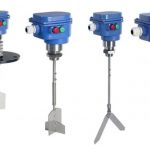Table of Contents
The most common electromechanical pressure switch is composed of a sensing element and an electrical snap-action switch. A number of different types of sensing elements can be used but they have one thing in common: they move in response to changes in the system pressure. Through their movement they directly act on the opening and closing of the snap-action switch’s contacts.
Differential pressure switches are slightly different. There are two pressure ports, one for the low pressure side and the other for the high pressure side. The low pressure and high pressure fluids act on the same sensing element. Since the surface areas are equal on each side, the switch is in equilibrium when the pressures are equal. As pressure on the high-pressure side increases, or pressure on the low side decreases, the piston moves up and, at a preset differential pressure, activates the snap switch.
electromechanical pressure switch is commonly grouped together based on the type of sensor technology employed. The characteristics of the sensor tend to define the relative accuracy and life one can expect from the switch.
Read Also:-
Remote seal DP transmitter Calibration
Related Search:-





Air filter Regulator (AFR)
Air filter Regulator (AFR)





Working Principle of Diaphragm Level Switch
Working Principle of Diaphragm Level Switch





Paddle level switch working principle
Paddle level switch working principle





Displacer/Level Troll Type Level Transmitter
Displacer/Level Troll Type Level Transmitter





Valve Positioner
Valve Positioner





